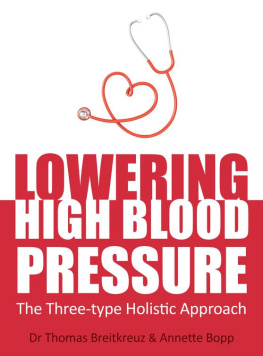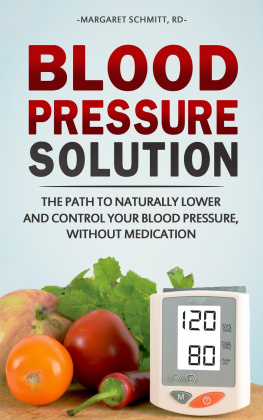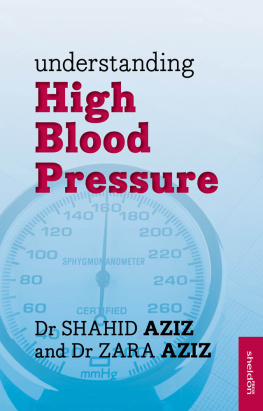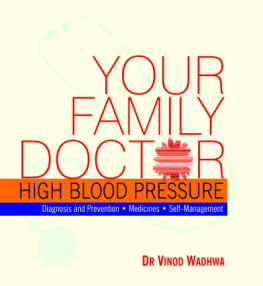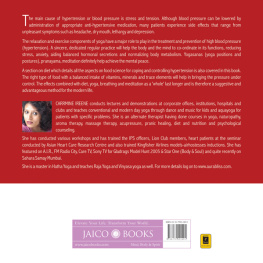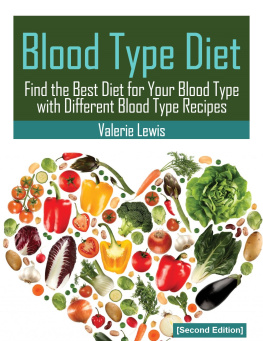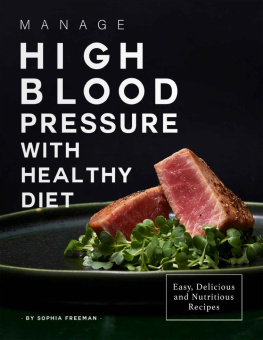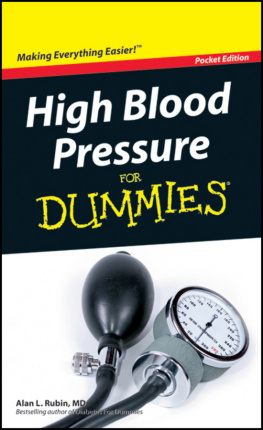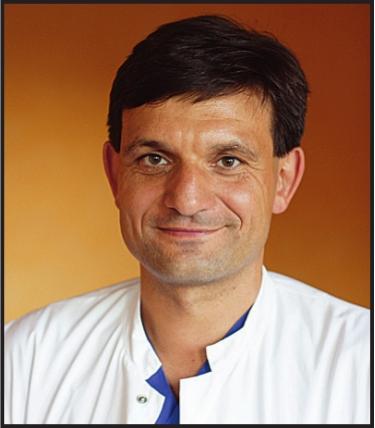High blood pressure (hypertension) is one of the most common chronic illnesses in the world and one of the chief causes of cardiovascular disease, which in turn is one of the most frequent causes of death reason enough to tackle your high blood pressure.
In recent years, our understanding of how to treat high blood pressure has fundamentally changed. Steps patients can take on their own have become more important than medical treatment, and lifestyle changes more important than prescriptions. This new understanding, combined with many years of treating and talking to patients, led to an updated treatment model: the three-type approach to high blood pressure. This individualised approach, which is now being implemented in many medical practices and anthroposophical clinics, incorporates options derived from naturopathy, anthroposophical medicine, and conventional medicine.
Whats more, this programme is fun! Instead of attempting to reduce the statistical risk of cardiovascular disease, it aims to change your life right here and now, by balancing out any one-sided aspects of your individual constitution. The result is lower blood pressure and fundamental improvements in your quality of life. Were talking about concrete, individualised steps you can take, and you are the centre of this therapeutic approach. It works fast, so you will soon enjoy increased productivity and resilience. In particular, youll find that youre simply enjoying life more much more. Just try it!
Why our blood is pressurised
Anything that flows must be pressurised or it would not be able to move, so our blood needs pressure in order to circulate throughout the body. We need blood pressure in order to stand upright, to move, to think in short, to live. Without pressure, blood could not to rise into the head against the force of gravity. Thats why we lose consciousness if our blood pressure drops steeply. Adequate blood pressure, therefore, is essential for an active life.
Blood pressure varies constantly
Our blood pressure is constantly changing, resetting itself with every heartbeat as our bodies adapt to the circumstances of our lives. Blood pressure is lower when we are sleeping than when we are awake. To allow us to wake up, the body raises our blood pressure an hour or two before waking. Sympathetic nervous system activity increases, and as a result the heart beats faster and the tension in the vascular muscles increases. At this stage, even our dreams reveal that we are beginning to come to the closer we are to waking up, the more realistic our dreams become. In contrast, dreams during the first few hours of sleep are more imaginative and less lifelike.
Blood pressure is lower when we are lying down than when we are sitting or standing. When we stand up, however, an abrupt increase in blood pressure is required in order to keep the brain adequately supplied. In some individuals, this increase doesnt happen rapidly enough, and they tend to see black briefly when they stand up.
When we move and tense our muscles, the blood supply to the muscles must increase, which also requires an increase in blood pressure enough to ensure even tensed muscles remain well supplied.
After a meal, blood supply to the gastrointestinal tract increases by a factor of three to four, and maintaining the usual level of blood pressure in the brain takes more effort, which is why we may feel like resting after we eat. The less fluid there is circulating throughout the body, the lower our blood pressure drops and the more the tension increases in the small arteries, which are forced to contract in order to maintain blood pressure in spite of the reduced volume of blood. The heart has to beat faster in order to keep this smaller amount of blood in circulation. In extreme cases, circulation may fail altogether because adequate blood pressure can no longer be maintained, and the person loses consciousness. That is why adequate fluid intake is important every day.
***
BLOOD PRESSURE AND CONSCIOUSNESS
Adequate blood pressure allows us to maintain consciousness. Conversely, we lose consciousness when the pressure drops excessively. An example is when teenagers faint at rock concerts out of sheer enthusiasm: they lose consciousness i.e., consciousness no longer resides in the body. When this happens, the blood vessels dilate, especially in peripheral parts of the body. Blood pressure drops, and blood supply to the brain is no longer adequate. A few seconds in a horizontal position with legs raised is all it takes to restore consciousness.
***
When the kidneys excrete increased amounts of salt and fluid, blood pressure drops. Conversely, the kidneys can also raise blood pressure by retaining salt and fluid. They do this by secreting a protein called renin. Renin is an enzyme that contributes to the formation of angiotensin, a hormone that constricts the blood vessels and stimulates the adrenal glands to release another hormone called aldosterone. Aldosterone causes ).
Psychological influences and stress also influence blood pressure by affecting the tension in the blood vessels, which dilate or contract in response. This is as true of happiness and pleasure as it is of worry, anger, and sorrow. Blood pressure rises with every extreme emotion and drops again as soon as the tension passes or an escape hatch is found.
Blood pressure adjusts with every heartbeat, constantly oscillating around a specific base value. This variability of blood pressure, which allows it to adapt to every situation, is an important for stable circulation.
Circulation and blood vessels
Blood circulates constantly through the vessels, with the heart in the centre of the system. In terms of function, the circulatory system as a whole is divided into three parts: head circulation, lung circulation, and limb circulation.
Relatively speaking, head circulation is more autonomous than the other two branches of the system. The brain is capable of maintaining constant pressure in the blood vessels that supply its neurons, which ensures both an adequate supply of blood and constant consciousness. As with all brain-regulated functions, whether we are resting, running, or excited makes no difference. The influence of bodily processes on conscious thinking, feeling, and willing is deliberately minimised, and this emancipation contributes to our autonomy as human beings. Maintaining a consistent blood pressure, to the extent possible, is also important for the brains supply of oxygen. The brain alone consumes a quarter of the bloods oxygen content! At high blood pressure levels over 230240 mmHg for the systolic (upper) reading and 130 mmHg for the diastolic (lower), relatively constant blood pressure can no longer be maintained in the head (see are expressions of the fact that brain function has been affected, which is why they are similar to the symptoms of stroke.

